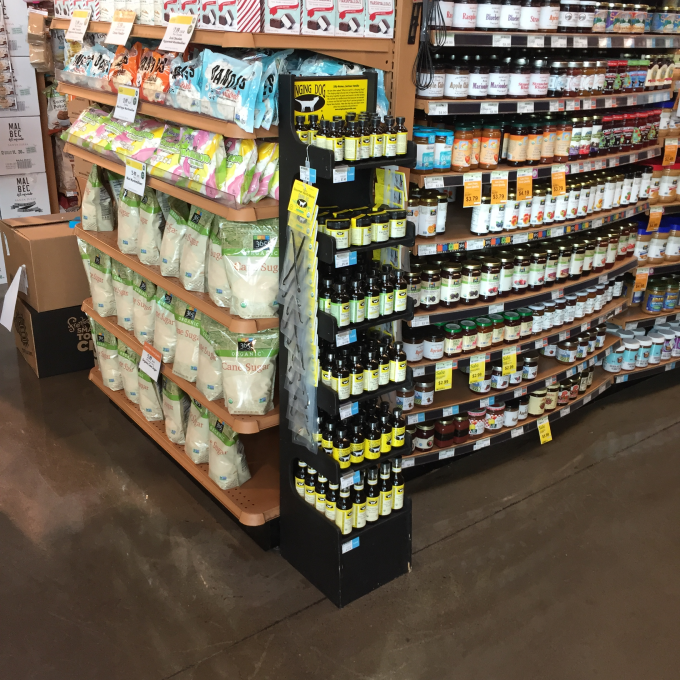Posted by Singing Dog Vanilla / Blog / 0Comments
Pick any famous brand, from Chobani to Burt’s Bees, and I guarantee it wasn’t easy for the founders to get the first products on the retail shelf. The person making those initial calls was nervous and got rejections. Selling to retail stores is difficult. It doesn’t matter how great your offering is, the retail buyer […]
Pick any famous brand, from Chobani to Burt’s Bees, and I guarantee it wasn’t easy for the founders to get the first products on the retail shelf. The person making those initial calls was nervous and got rejections. Selling to retail stores is difficult.
It doesn’t matter how great your offering is, the retail buyer on the receiving end of your call will have their guard up as soon as they realize you’re selling something. You may not even get them on the phone. You will hear them in the background saying, “I’m not here!”.
Do you blame them? Think about all the sales calls you’ve answered. As soon as someone you don’t know says, “How are you today?” after mispronouncing your name, you put your guard up. You aren’t even listening to their pitch. If you’re polite you say “no thank you” as you hang up. Most of the time you just hang up.
We have developed a friendly way to introduce products to retail buyers. It will take more time than just picking up the phone and “dialing for dollars”, but it will help you to take baby steps toward building a solid relationship with buyers. Because we are in the natural products business, most of my examples will be related to approaching buyers for natural and organic grocery stores. Our company is built around serving independent groceries, bakeries, scoop shops, and restaurants. I recommend starting with the smaller, independent retailers in your industry. Let’s begin selling to retail stores…
Step One: Do your homework. Begin your new customer relationship by taking the time to verify that the store sells products like yours before making contact. Don’t waste your time or theirs! If they tell you that they don’t sell products in your category, then you have failed step one. Take a few minutes to check out their website and learn what customers they serve. If you call MOM’s Organic Market and try to sell them a product that uses vanillin (fake vanilla) or about 100 other ingredients banned in their stores you have just wasted their time and yours.
Step Two: Learn the buyer’s name. Call the store and ask the person who answers, “Hello, I’d like to send your grocery buyer some information about our organic vanilla products. Who should I attention that too?” Now you have their name. Make sure you have the correct spelling.
Step Three: Send a postcard to the buyer. A small color post card with your brand and a short description of your product is all that is needed. Make it eye-catching and authentic. Keep the message very short. Hand-write the buyer’s name and address on the card and mail it.
Step Four: Call and ask for the buyer by name. About a week after mailing the post card, call the store, tell them who you are, and ask for the buyer by name. It’s likely they’ve seen your post card and will recognize your company name when you call them. Keep your message very short. Buyers are VERY busy and are receiving many calls just like yours. We like to say something like this: “Hi this is Angie from Singing Dog Vanilla. We have a line of organic vanilla extracts and baking items. I’d like to send you product info and pricing. Would you prefer that I send that by mail or by email?” Most likely they will ask you to email it and they will give you their email address. Often the buyer will be appreciative of your approach and will talk to you at that moment. Be ready to answer questions and to send samples if they ask (Do not send samples without their permission). If this is a chain of stores, they may have a submittal process and paperwork for you to fill out.
Step Five: Ask how they prefer to be contacted in the future. Most buyers will tell you to email them, but a surprising number of buyers at independent stores will invite you to call them back. Ask them the best time to follow up so you don’t bother them at a bad time.
Step Six: Follow up and ask for the order. Something very simple like, “Do you have any more questions or are you ready to place an order?”
It’s difficult selling to retail stores, but you will get used to it. As your business grows you will begin to enjoy making calls. Each call has the potential to turn into another long-term customer. These friendly steps to building up sales to retail stores will also come in handy when you hire novice salespeople. This is a great way for them to introduce your products to retail stores while they learn how to build solid relationships with buyers.
Enjoy!

